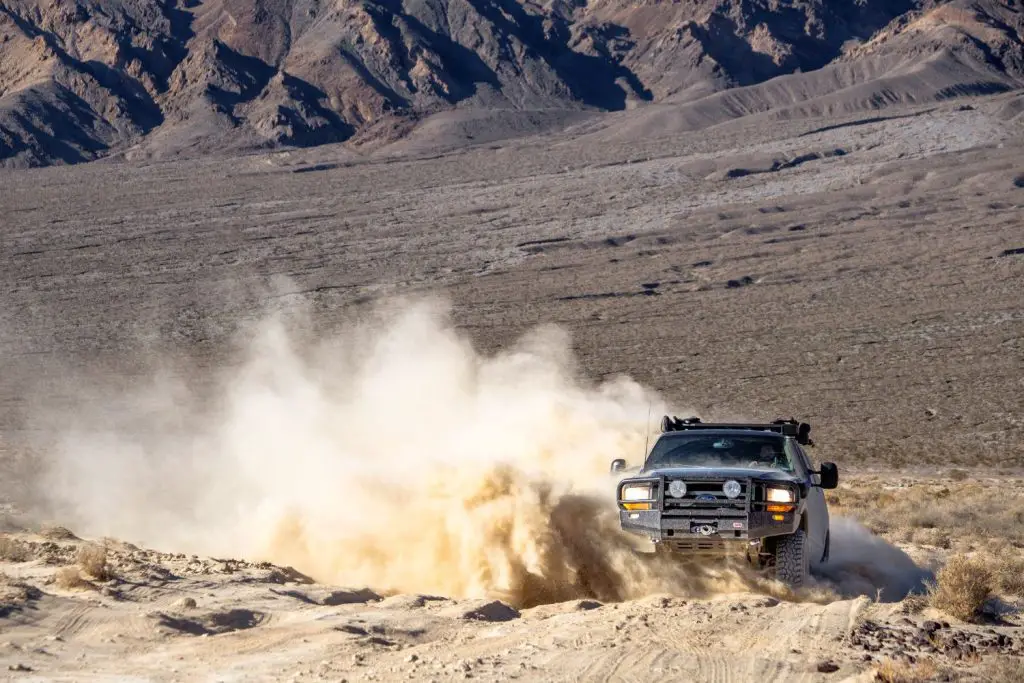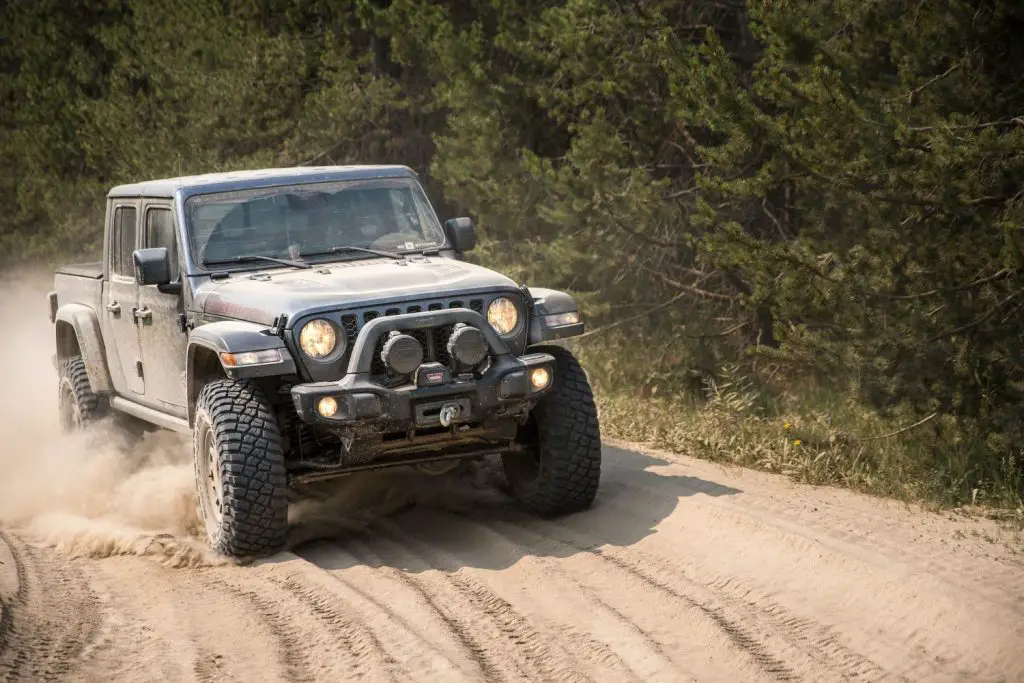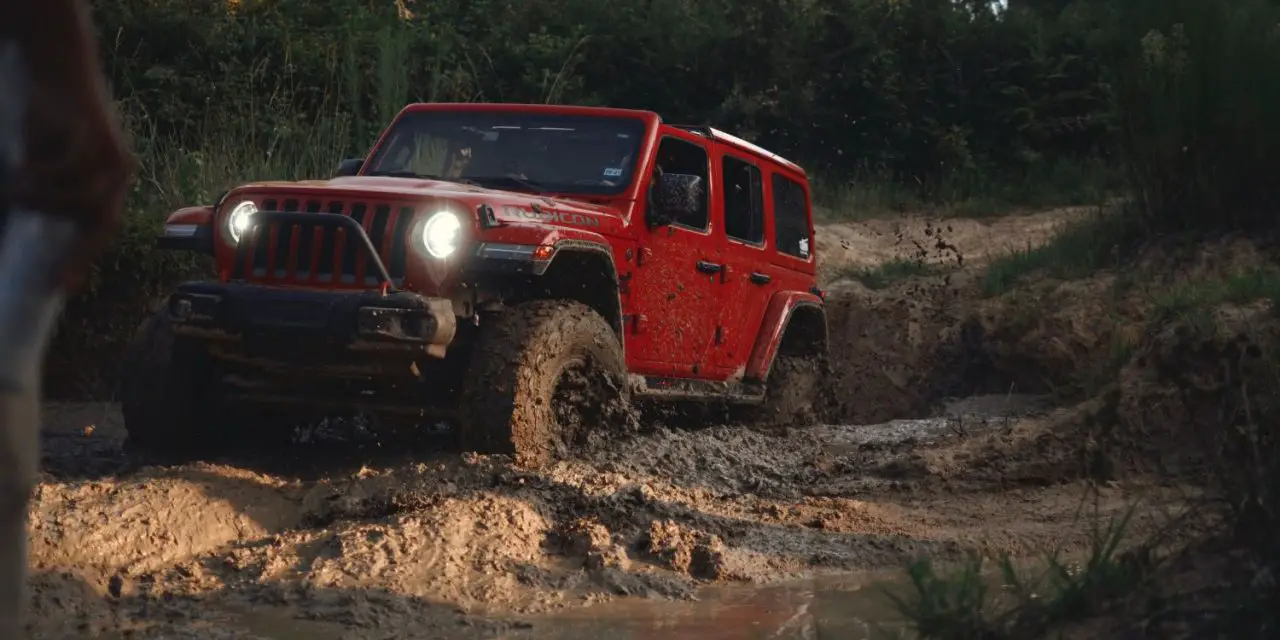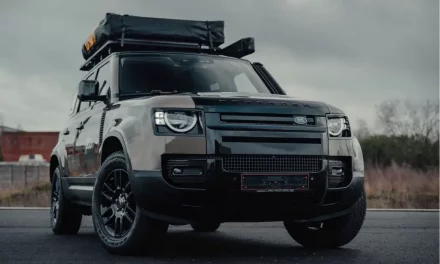I get commissions for purchases made through links in this post.
All-terrain tires are often sought-after for their ability to handle all obstacles. However, that doesn’t mean they can prevent punctures from highly sharp objects. If you’re considering modifying your vehicle, you’ve likely considered all-terrain tires. Before you get them, you should know all about their puncture resistance.
All-terrain tires are harder to puncture because they’re thicker and often come with silicone liners that prevent sharp objects from breaking the rubber. Furthermore, they push away sharp items rather than lining them up with the tread, reducing the chances of punctures.
This post will dive into why all-terrain tires are harder to puncture, what can still pierce them, and what to do if something breaks through the tread or sidewall.

Why Do All-Terrain Tires Have Superior Puncture Resistance?
All-terrain tires have superior puncture resistance because they’re thicker, denser, and have more substantial rim beads. Furthermore, all-terrain tires often have steel or mesh liners that prevent punctures, even if something breaks through the outer rubber. These benefits help preserve the tires on mud, asphalt, and more.
Let’s review each of these explanations in detail below.
- Thicker tires mean fewer punctures in the tread. Most all-terrain tires weigh more than regular tires because they use a lot more rubber. Anything that pokes the tire will have to move further into the sidewall or tread to cause any issues. You can usually remove nails, sticks, and rocks without any problems.
- Denser rubber often prevents sidewall damage, which is one of the worst places for tire punctures. It’s challenging to remove sharp objects from the sidewalls of regular tires. Dense rubber adds a lot of resistance, which pushes things away from the tire rather than letting them puncture the rubber.
- Rim beads hold the tire to the rim much easier, which stops them from slipping or popping upon impact. Not only does this prevent sharp items from puncturing the rubber, but it also means you can drive on uneven terrain without lifting the tire off the rim.
- Internal liners of mesh, steel, and other materials protect the tires if sharp objects poke them. These liners push away anything that breaks through the tire, even if it makes its way through the dense, thick rubber. Metal liners typically weigh more than fabric mesh liners.
High-quality all-terrain tires are significantly more puncture-resistant than low-end all-terrain tires. Additionally, new tires are much more resilient than old, worn tires.
Ensure your all-terrain tires are filled to their correct PSI when cold. This will prevent unwanted damage from changing terrain, sharp items on the road, and more.
What Can Puncture All-Terrain Tires?
Nails, glass, and other sharp items can puncture all-terrain tires if they’re under-inflated. It would be best if you filled all of your tires to the maximum PSI to prevent them from losing their puncture resistance. Furthermore, worn all-terrain tires with low treads are much more likely to get punctured by sharp objects on the road.
All-terrain tires above 50,000 miles (about 80,000 km) are more likely to puncture. The same applies to all-terrain tires with low, smooth tread. All-terrain tires often grip the road, mud, or snow much better due to the thick treads. Once these treads are worn down too low, they become hazardous and much more fragile.
If your all-terrain tires are low-quality, over-driven, worn, or otherwise damaged, here’s what can puncture them:
- Nails
- Rocks
- Sticks
- Glass
- Needles
As you can see, all-terrain tires are puncture-resistant but not puncture-proof. If they’re in good condition and filled to the correct PSI, they’re much more protected against these sharp objects.
Note: All-terrain tires are more likely to be punctured if the object (such as a nail) sticks straight up. If the item is lodged and doesn’t move, it pokes the tire through the tread. Additionally, sidewalls are less resilient but much less likely to be struck head-on by a sharp object.

What To Do if All-Terrain Tires Are Punctured
If all-terrain tires are punctured, pull over to the side of the road and use Fix-A-Flat (or a similar tire hole repair kit). Remove the item that punctured the tire, then drive to the closest repair shop to repair or replace the tire. If the tire can’t hold enough air, replace it with the spare tire and head to the shop immediately.
Sidewall tire punctures can rarely be repaired, and should generally be replaced by buying new tires from somewhere like this (Paid Link). This applies to all types of tires, including all-terrain tires. Fortunately, they’re much harder to puncture. Nevertheless, it’s best to use a tire sealant before driving on a punctured tire. Holes more prominent than a couple of centimeters shouldn’t be filled since they’ll likely leak too much air.
Try Fix-A-Flat Aerosol Tire Repair (Paid Link) to seal and inflate the punctured all-terrain tire. Not only does it cover the puncture hole, but it also adds a lot of air to the tire. It’s suitable enough to get you to the closest repair shop or mechanic without having a flat tire. Make sure you choose the right size for your all-terrain tire’s PSI.
All-terrain tires likely won’t break or pop compared to regular tires, but they’re not the best in every category. You’ll have a bumpier ride on asphalt, which means nails can cut them in the road. Flatter tires with less PSI will pop or go flat much quicker, but some companies recommend reducing the PSI of your all-terrain tires when you’re on asphalt.
A quick tip: Consider keeping a spare all-terrain tire if your current ones rupture. All-terrain tires drive much better if all four tires are the same rather than having a regular spare and three all-terrain tires.
Conclusion
Most all-terrain tires are designed to withstand puncture wounds and rough terrain. However, they’re not invulnerable to anything sharp or unpredictable. Taking care of your all-terrain tires will make them more puncture-resistant, but safe driving practices are always the best ways to prevent them from popping or wearing down.





